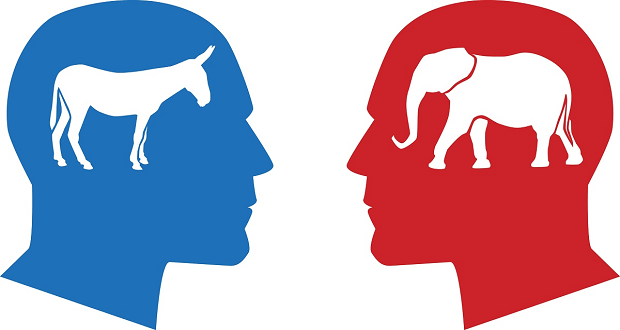
“It always seems impossible until it is done.” — Nelson Mandela
Rewind to 2019 and the ongoing conversations of how flexible time, home office, and remote work was an additional challenge for businesses … and now look at what has become possible given the circumstances surrounding the pandemic. These changes open up an enormous amount of previously untapped talent locally and globally.
Globalisation is here to stay and so are remote and hybrid work, depending on the industry and the nature of our work. These shifts also must be taken into account when readjusting your diversity, equity, and inclusion (DEI) strategy for it to become a strong asset to your organisation.
DEI as an Organisational Asset
It is a given that every workplace has diversity — diversity in gender, in age, in race, in religion, in sexuality, and in many other aspects. Equity refers to each and every employee needing different resources to have the same opportunities. An example: While baby boomers may prefer face-to-face meetings, Gen Zers are often much more confident in the usage of virtual tools, seeing them as time savers. Neither is “right or wrong,” but these differences are important to understand to support everyone in doing their best work. Inclusion is the action and outcome if diversity and equity are respected and different frameworks provided for those with different needs.
The “business case” for DEI was highlighted in the 1990s when IBM provided data on the benefits of being inclusive. Some of them are:
- Higher employee motivation, which leads to higher productivity
- Psychologically safe environments leading to more innovation, higher engagement, and fewer mental health challenges. Employees can bring their whole selves to work and feel safe to speak
- Higher employee retention rates and return of investment (ROI)
- Companies reach into untapped business areas and reach new clients. Take accessibility as an example. There is physical accessibility and digital accessibility:
- If the company provides physical accessibility, they will be able to hire more diverse talent. These employees will be able to bring different perspectives from their lived experience in various areas of the business such as products, processes, and policies.
- Or considering digital accessibility, if you are selling products online and your webpage is not accessible to people with various disabilities, you are losing out on the population’s purchase power.
Steps to Realize an Inclusive, Sustainable, and Healthy Workplace Culture
First and foremost, there is no one size fits all. Every business and every industry are unique just as each employee, and this needs to be considered by everyone working in this field. In order for DEI to be successful, it is important that you have the stakeholders’ buy-in at all times.
Let me offer some framework on what to develop and implement to support an inclusive workplace:
- Needs assessment: What does the data show? What is the outcome of a DEI employee survey? Perform interviews within different demographic groups and with people at various levels in the company to define the main pain points, targets, timelines, priorities, and resources.
- Prioritize an unbiased hiring and promotion process to obtain diverse talents from entry level throughout C-suite.
- Once you define areas of improvement, it is crucial to develop and implement recurring education tools — which have to be part of a successful strategy, but importantly can’t function as a stand-alone. Leaders, especially, need to receive specific education on how to communicate, ensure respectful discussion and feedback culture, and develop human-centred skills such as empathy, ensuring an individual approach toward each team member.
- Regular evaluations of the company’s rules, regulations, and policies: Are they reflecting the current times and workforce? Are they providing flexible work models? Are they offering accommodations to caregivers? What are the parental leave policies? Do they have an anti-discrimination parameter included, as well as a reporting policy throughout all hierarchies for complaints?
- Communication around all DEI measurements are key. It needs to be authentic and real, communicating the achievements but also the challenges and the areas where room for improvement is identified and not yet fulfilled. Building trust requires transparent communication.
- Integrate inclusive language throughout DEI strategy. This means choosing words and framing carefully to avoid stereotypes, judgement, and stigmatization of marginalized groups. It also means considering how communication can be accessible to those whose first language may be different from the organisational norm.
- Build in accountability and learning for when people inevitably make mistakes surrounding microaggressions and other potential harm. We all know the expression “walk the talk.” It is one thing to have policies and communications about DEI. It is another to see actions. As they say, “Actions speak louder than words,” and this is especially important to build trust and credibility.
- Especially within hybrid and remote work, setting up exceptional technical support to minimize the “distance” and ensure remote employees can have similar presence to those within the room (e.g., sound technology, screens) is crucial. Digital tools can help increase psychological safety so everyone feels comfortable to speak up.
- Provide a framework honoring religious and cultural practices such as daily prayers, choice of holiday and celebrations, and flexible days as well as spaces for resting and breastfeeding.
- Monitor how and why employees get promoted to understand the company’s status quo. Address inequities identified with policy changes to avoid gaps between promotions across dimensions like race, gender, and in-person vs. remote workers. Offer mentor and/or sponsorship programs to support increased access of opportunities to historically marginalized groups.
- Continue measuring perceptions and progress through surveys. “What’s measured gets done” — and employee input on programs and needs should be ongoing. Which initiatives are seen as most helpful or needing work? Which organisations and areas should the volunteer time be assigned to? What employer benefits are considered added value and which may be outdated?
DEI initiatives are as crucial for business as any other workstream, and need to be treated as such. If organisations have the right strategy in place, they’ll see what difference it makes in all areas of the business. DEI is not just the right thing to do, but also key to the company’s success and the competitive advantage it brings, particularly with buy-in from all stakeholders. Whether in small domestic organisations or international companies, diversity is part of our everyday lives, professionally and privately; why not equip ourselves with the right tools? Be culturally intelligent and curious, listen, ask questions, have an open mind, and embrace diversity as it enriches your organisation and every member of it. It always pays off to be proactive and ahead of the curve in knowledge and action.


















